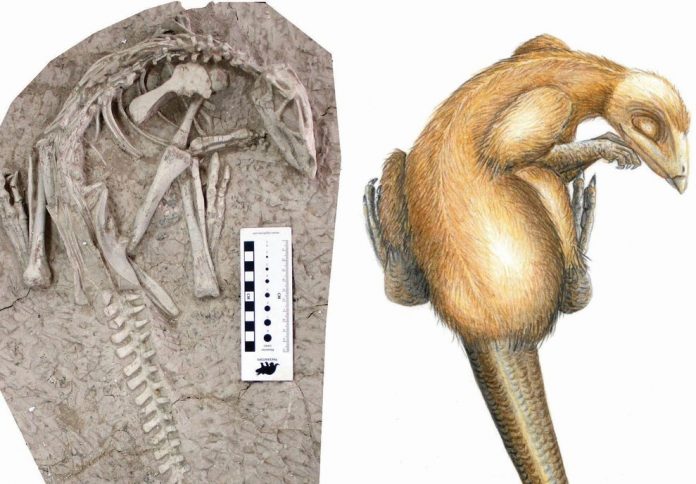Researchers have discovered a new species of dinosaur estimated to be up to 125 million years old.
Two intact fossils of Changmiania liaoningensis suggest that the animals were trapped by a volcanic eruption while resting at the bottom of their burrows. The newly described species is the most primitive ornithopod dinosaur to date, a group that also include our Bernissart Iguanodons.
The Lujiatun Beds are the oldest layers of the famous Yixian Formation, which for more than 20 years has produced several hundred beautifully preserved skeletons of feathered dinosaurs in the Liaoning Province in north-eastern China. They date back to 125 million years ago and are contemporary with the Bernissart Iguanodons.
Eternal Sleep
Unlike the fossils found in the more recent parts of the Yixian Formation, the dinosaurs found in the Lujiatun Beds have not retained any traces of feathers; however, most of the skeletons are incredibly well preserved in three dimensions, without their bones having been moved after the death of the animal. “These animals were quickly covered by fine sediment while they were still alive or just after their death,” says palaeontologist Pascal Godefroit (Royal Belgian Institute of Natural Sciences). Some paleontologists believe that these dinosaurs were victims of a gigantic volcanic eruption. Clouds of ashes would have instantly covered the Liaoning forest dwellers. The Lujiatun Beds would have been a kind of Cretaceous ‘Pompeii’.
Godefroit and his Chinese and French colleagues have just described a new genus of dinosaur based on two magnificent skeletons discovered in the Lujiatun Beds and conservated in the Liaoning Paleontological Museum in Shenyang, China. It was named Changmiania liaoningensis, Changmian meaning ‘eternal sleep’ in Chinese.
Early Ornithopod
It was a small, herbivorous, bipedal dinosaur, about 1.2 metres long. It is the most basal representative of ornithopods found to date. Ornithopods are a group of herbivorous, dinosaurs that flourished particularly in the Cretaceous period and which includes the Bernissart Iguanodons, as well as the hadrosaurs, or duck-billed dinosaurs. With its very powerful hind legs and long, stiff tail, Changmiania was a particularly fast runner.
“However, certain characteristics of the skeleton suggest that Changmiania could dig burrows, much like rabbits do today”, says Godefroit. “Its neck and forearms are very short but robust, its shoulder blades are characteristic of burrowing vertebrates and the top of its snout is shaped like a shovel. So we believe that both Changmiania specimens were trapped by the volcanic eruption when they were resting at the bottom of their burrows 125 million years ago.”
The study is published in the scientific journal PeerJ.















